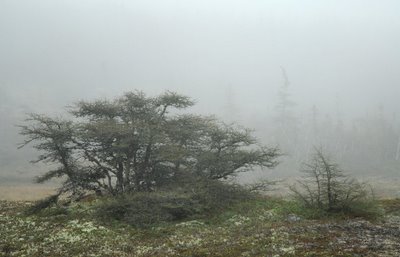
On the first Wednesday in August, tens of thousands of Newfoundlanders converge at Quidi Vidi Lake to watch the rowing crews at the annual Royal St. John's Regatta. Founded in 1818 , it is the longest running sports event in North America. Male female, six rowers and a coxswain to a rowing shell-compete in heats throughout the day wherein teams race up and down Quidi Vidi Lake to win championships in the early evening.
In August, 2005 a new rower appeared at the lake - a life-size bronze statue was unvailed at lakeside. Two years in the making Morgan Mac Donald, 24 year-old native Newfoundlander with a degree in Business Administration and one year of formal art education used the lost wax process to protray a man sitting in a racing hull, rowing across the water. "This sculpture", said Mr. MacDonald, "is an attempt to encapsulate the strength, athleticism and elegance of the sport".
"The Rower is, at its very core, a monument to dreams and to human potential".
- Gil McElrroy



















